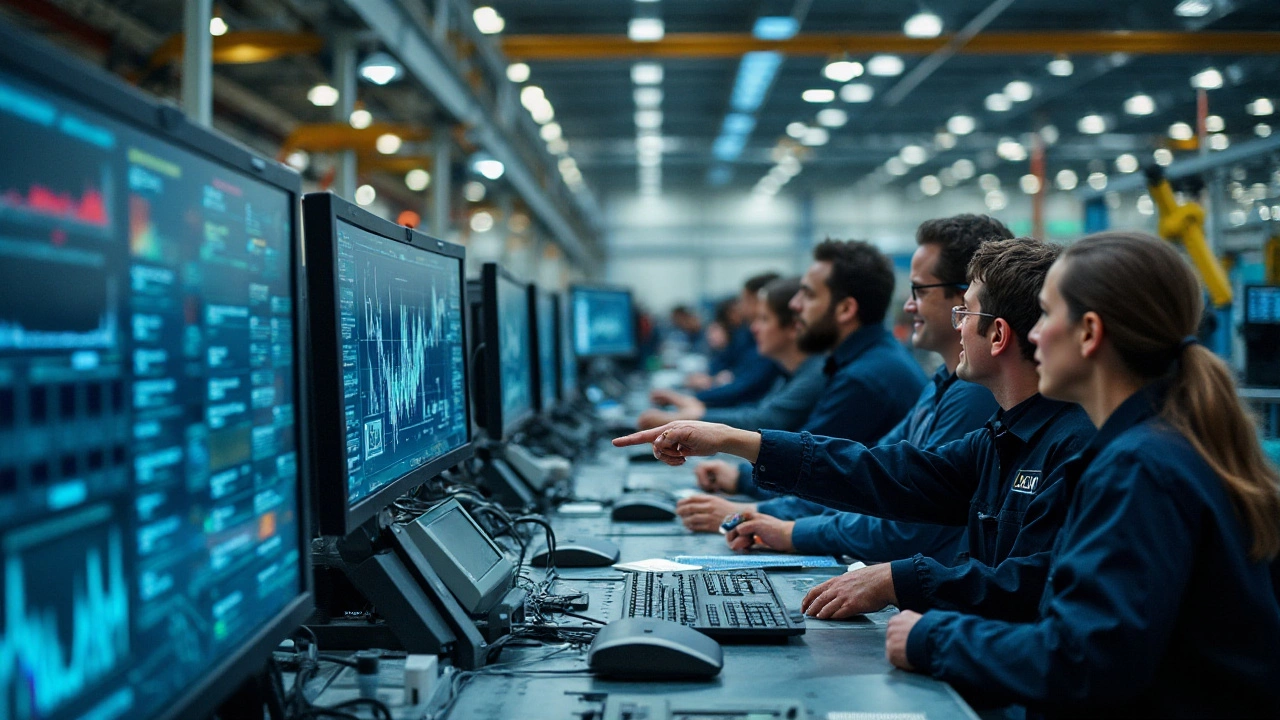US Economy: What’s Happening and Why It Matters
The United States is still the biggest economy in the world, but the numbers are shifting fast. After a strong rebound from the pandemic, growth slowed in the last two years, and the Fed stepped in with higher interest rates to tame inflation. Those rates affect everything from home mortgages to the cost of capital for factories, so you’ll hear the impact in boardrooms and shop floors alike.
GDP grew about 2% last year, a modest rise compared with the double‑digit gains seen during the recovery. Consumer spending holds the biggest piece of the pie, driven by wages that have mostly kept pace with price hikes. However, confidence indexes show people are cautious about big purchases, and that caution can spill over into business investment.
Key Drivers of Growth
Three forces dominate the current outlook: consumer demand, government policy, and global trade. When Americans buy more cars, appliances, or meals out, manufacturers feel that demand and ramp up production. At the same time, policies like tax incentives for clean energy and the Inflation Reduction Act are pushing capital into new tech and greener factories.
Trade is a double‑edged sword. The US imports a lot of consumer goods, especially electronics and apparel, while exporting high‑value items such as aircraft, pharmaceuticals, and advanced machinery. Trade tensions with China have eased a bit, but tariffs still affect the bottom line for many companies.
Labor remains tight. Unemployment is low, but skill gaps in advanced manufacturing and tech jobs mean firms often have to compete for talent, driving wages up and sometimes slowing hiring plans.
Manufacturing Outlook in the US
Manufacturing still accounts for roughly 11% of US GDP, and that share is stable thanks to automation and reshoring trends. Companies are moving some production back from overseas to avoid supply chain shocks and to be closer to customers. This creates opportunities for equipment suppliers, especially those offering flexible, modular machines.
Automation adoption is accelerating. Robots, AI‑driven quality control, and digital twins help factories boost output while keeping labor costs down. If your business can invest in these technologies, you’ll likely see higher margins.
Energy costs are high, but the push for renewable power is opening a market for energy‑efficient equipment. Manufacturers that can run on solar or hybrid systems are getting a competitive edge, and financing options are getting better thanks to green loan programs.
Regarding exports, the US remains a top source for aerospace parts, medical devices, and advanced chemicals. Companies that can meet strict US FDA or FAA standards can tap into a premium market that values quality and compliance.
For small‑scale producers, niche products like custom‑molded plastics, boutique food processing tools, or specialty metal parts are thriving. The key is to focus on short lead times and high customization – things big factories can’t always deliver quickly.
In short, the US economy is steady but cautious. Consumer confidence, government incentives, and supply‑chain adjustments are the main levers. Manufacturing is evolving with automation, greener energy, and a mix of reshoring and niche specialization. Understanding these trends helps you decide where to invest, what products to develop, and how to position your business for the next wave of growth.

Top Industries Dominated by Small Businesses: Surprising Leaders and Insider Insights
Find out which industry truly has the most small businesses, what that means for entrepreneurs, plus actionable tips and surprising numbers.
Read More
Reviving American Manufacturing: Government Schemes and Strategies
The resurgence of manufacturing in the United States presents both opportunities and challenges. Government efforts aim to stimulate domestic production, leveraging new technologies and investments. Revitalizing manufacturing could bolster employment and national security. However, competition and market dynamics pose significant hurdles. This article explores various governmental strategies to rekindle manufacturing for economic strength and resilience.
Read More